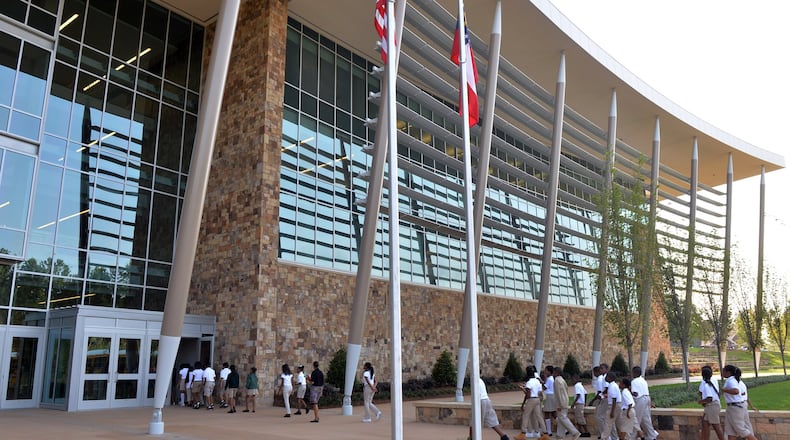Atlanta’s first charter school will celebrate its first high school graduating class on Saturday—82 seniors who are the proof that sometimes the long game pays off.
Drew Charter School opened in East Lake in 2001 at the center of the East Lake Foundation’s work to turn a neighborhood known for poverty and violence into a place families wanted to live.
The school was initially one of Atlanta’s lowest performing elementary schools. But as the school’s test scores rose, development transformed East Lake into a safer place. A housing project was demolished and replaced with mixed-income apartments. New stores moved in.
Today, Drew and East Lake have become national examples of how to rebuild a neighborhood around the neighborhood's school. Two new organizations—Purpose Built Communities and Purpose Built Schools—spun off to support similar efforts in more than a dozen other cities and to try to replicate Drew Charter School at four Atlanta public schools.
The Atlanta Journal-Constitution spoke with Carol Naughton, president of Purpose Built Communities and a founding member of the Drew board.
Q: What lessons does Drew have for other communities?
A: The fact that Drew has been open for enough years to have evolved and to have been a neighborhood school for all these years means we can create a pathway and a model for other schools. And our colleagues at Purpose Built Schools are taking the lessons from Drew directly and applying them at four schools in Atlanta. That work is informing what is happening around the country in other neighborhoods that are part of the Purpose Built Network.
Q: What mistakes did Drew make along the way?
A: There are certainly things we would do differently if starting over. If we were starting over, we would have invested in pre-K much earlier. Now we appreciate how important high-quality early learning is for all children. The interventions are less expensive and more certain than interventions that come along later in a child's life.
Q: How has Drew evolved over the years?
A: The first few years of operation, were helping kids catch up. When we first opened, the kids who walked in the door were the kids we wanted to serve. They were three, four, five years behind grade level. We didn't appreciate how much it would take for those kids to catch up. After four or five years, our kids were mostly on grade level and we started to think about how to we move from a "B" school to an "A" school. That led us to where we are today as a project-based STEAM [Science, Technology, Engineering, Arts and Mathematics] school.
Q: Today, fewer Drew students are low-income. Is Drew still serving its purpose?
A: Yes. This is a really good example of how Drew has evolved over the years. When we first started we were at 90 percent or above for students who were eligible for free or reduced-price lunch [a common proxy for the percentage of children living in poverty]. Slowly that dropped and in the lower grades we were at 50 percent of students eligible free or reduced-price lunch. We looked ahead as a board and we saw the demographics changing. We wanted to protect Drew as this resource for low income families so we worked with the state legislature to change the law to allow us to use a weighted lottery. What we wanted to do was serve kids who were more economically disadvantaged. In our new charter petition, we included the ability to use a weighted lottery if less than 65 percent of students in a grade are eligible for free or reduced-price lunch. We will prioritize low-income kids in those grades. Our goal is to protect what we think is this wonderful pathway out of poverty for low-income families.
About the Author
Keep Reading
The Latest
Featured
